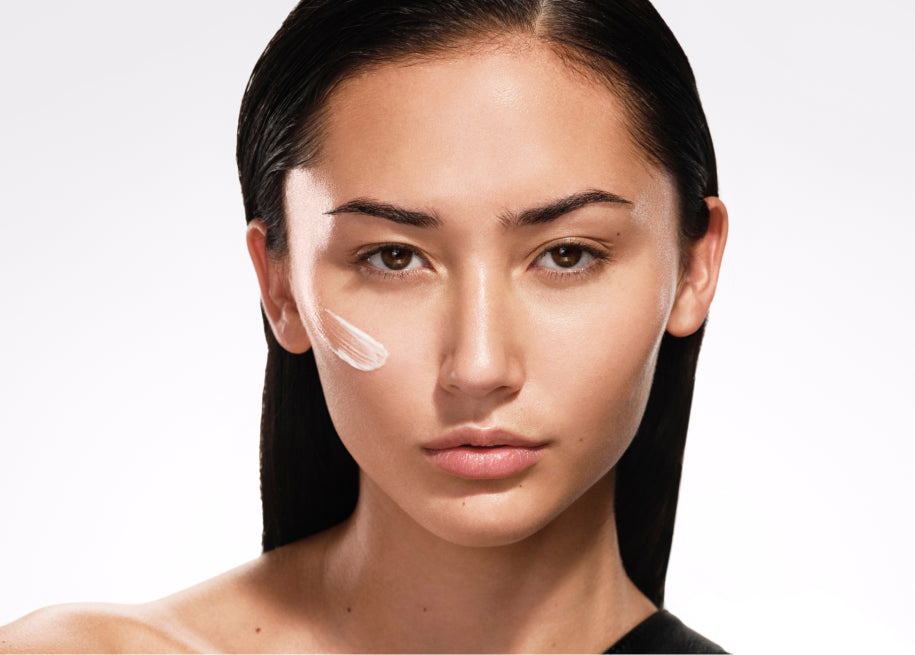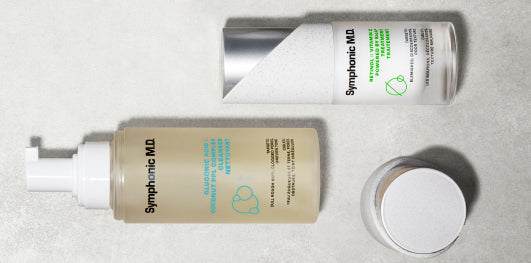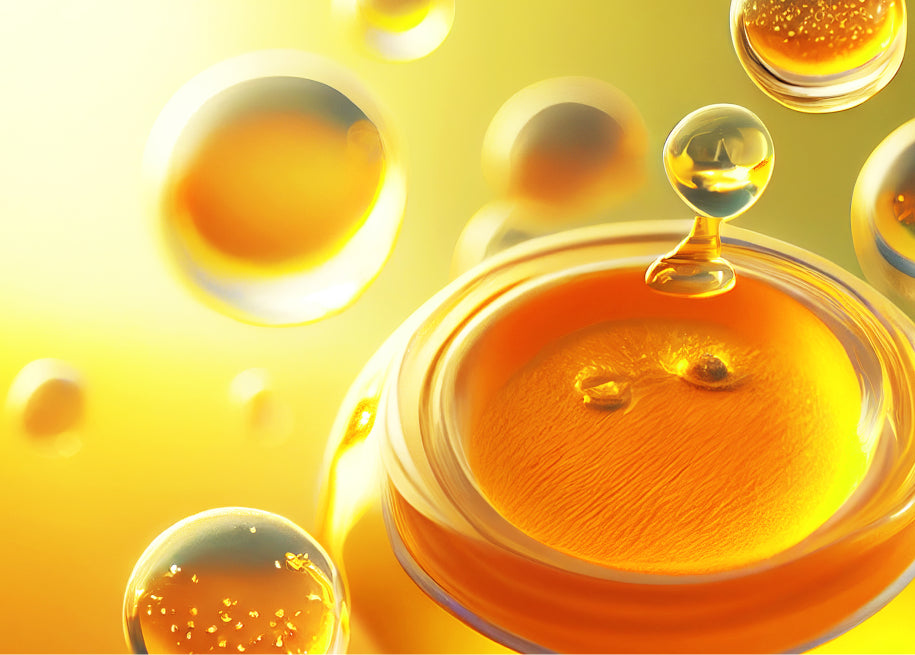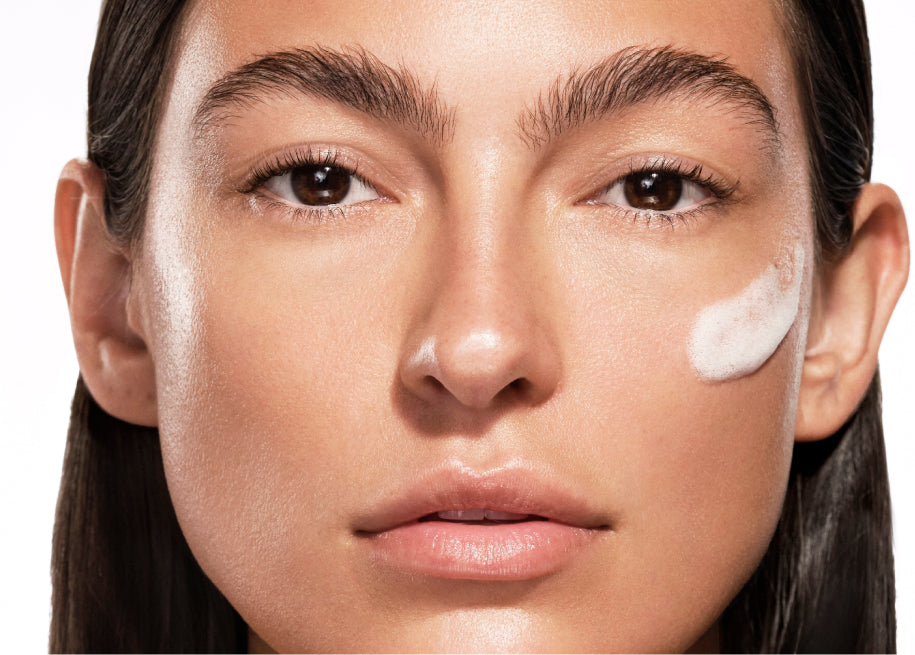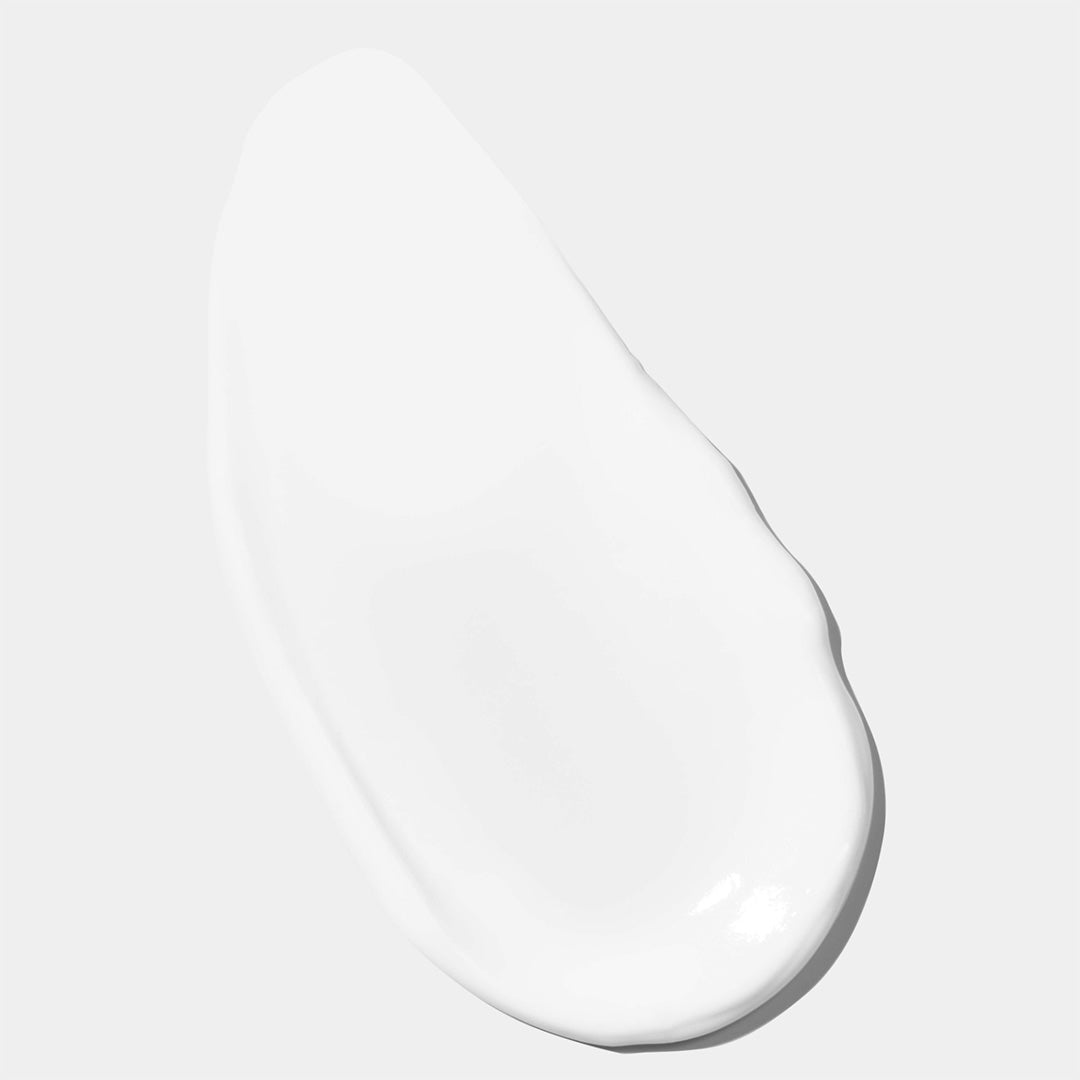All of us will have lines and wrinkles on our faces at some stage in life. While most of these lines can be attributed to aging, other factors can also cause them to appear - and prematurely too! Stress is just one of those factors. Of course, some stress is unavoidable, but there are things you can do to help avoid and treat stress lines on the face.
What are face stress lines?
Lines or wrinkles on the face that appear due to stress or tension are referred to as face stress lines. These lines can vary in how they look, both in depth and prominence. While other factors play a role in facial lines, face stress lines are usually associated with the facial expressions you make when you’re stressed, anxious, or tense.
What do stress marks look like?
Everyone’s skin is different, and this means stress marks and lines will vary from person to person. The way stress marks affect your skin will depend on factors such as your skin type, the level of stress you’re experiencing, and how your skin usually reacts to other factors.
Most commonly, facial stress lines manifest themselves as lines, red or purple spots, or dry patches on the skin. You might find these areas to be itchy, sore to the touch, or even accompanied by other symptoms like headaches, tiredness, or mood swings. Stressed skin can also cause breakouts, new wrinkles, and even enlarged jaw muscles if you’re particularly tense.
Where do stress lines commonly appear?
While stress lines can appear anywhere, they’re most prominent in places where you hold or display the most stress. They’re commonly found on the forehead, between the eyebrows, and around the mouth. This is because when we’re stressed or anxious, we often frown and tense our jaw, creating stress lines.
The causes of stress lines on the face
While stress lines are typically attributed to stress, angst, and tension, they are also a combination of other factors. It’s difficult to pinpoint exactly what causes a particular stress line or wrinkle, but there are several causes to consider. In general terms, the more stressed we become, the higher our cortisol (stress hormone) levels are. This can lead to a breakdown of collagen and elastin, eventually leading to wrinkles.
Here are some of the most common causes of stress lines.
Emotional stress
When we think about stress, we often think of the emotions it causes as this is how stress typically presents itself. High levels of emotional stress, like anxiety, worry, or chronic stress, can result in you inadvertently tensing the muscles in your face more. This tension can then lead to the formation of stress lines over time.
Facial expressions
Our face is made up of 43 muscles, so you can imagine the kind of workout your face is doing when you pull certain facial expressions. Repeated facial expressions, especially those you make when you’re stressed or under tension, will contribute to facial stress lines and wrinkles. As an example, chewing the inside of your cheek when you’re stressed can lead to stress lines around the lips which can make you look older.
Aging
We all know this one, and it’s the single biggest contributor to facial lines that we cannot control. As we grow older, our skin naturally loses collagen and elasticity, making it more susceptible to lines and wrinkles. However, stress can also speed up the process of aging, making those stress lines on the face much more noticeable.
Sun exposure
Exposure to the sun has a lot to answer for, including stress lines. Prolonged and unprotected exposure to the harmful UV rays from the sun can significantly damage the skin, leading to the formation of lines and wrinkles. A good example of this is not wearing sunglasses in bright sunshine and therefore squinting our eyes which creates fine lines around the eye area.
Lifestyle factors
Several lifestyle factors can also have an impact on stress lines, including when, where, and how they appear. Smoking, poor diet, inadequate sleep, and a lack of hydration can all contribute to stress lines on the face. Luckily though, these are things we can control with a little work.
The difference between stress lines and age-related wrinkles
We’ve talked a lot about stress lines and wrinkles, concerning both emotional stress and the natural aging process. While they can each cause lines on the face, they both have different causes and characteristics. Understanding these can help you determine why lines on your face have appeared and support you in creating a plan for managing them.
In the table below, we highlight the key differences between age-related wrinkles and stress lines, as well as possible treatments for them.
|
Stress lines |
Age-related wrinkles |
|
|
Causes |
Stress lines commonly appear after prolonged tension in the face due to stress or anxiety, including the contraction of facial muscles. Chronic stress can reduce the skin’s ability to regenerate and could decrease the production of collagen. When we’re stressed, we release the cortisol hormone which breaks down collagen and decreases the skin’s elasticity. |
The natural aging process makes wrinkles more prominent as our skin becomes more dry, thin, and less elastic. Aging also affects the skin’s ability to protect itself from damage, resulting in more lines and wrinkles. Historical sun exposure, genetics, and environmental factors also contribute to wrinkle and line formation. |
|
Appearance |
Stress lines on the face typically appear as dynamic wrinkles which means they are prominent when you make certain facial expressions. For example, frowning or squinting can make your lines appear more harsh. If stress is not managed, and the same facial expressions are repeated, these dynamic lines and wrinkles can deepen and become more permanent facial features. |
Age-related wrinkles can vary in appearance, from fine lines to much deeper furrows. As our skin has been exposed to more over a longer life, they often appear in areas that have been more exposed to the sun. This includes the face, neck, hands, and arms. The most common age-related wrinkles and lines are horizontal forehead lines, laughter lines, and crow’s feet around the eyes. |
|
Location |
The most common places for stress lines to appear are the forehead and between the eyebrows. These appear as a result of frowning, squinting, or concentrating for long periods with the face in a certain expression. |
Age-related wrinkles can appear anywhere on the body and face. However, they are commonly seen around the eyes, mouth, and forehead. |
|
Treatment |
Stress lines can be effectively managed with a little work to reduce stress in your life. Some techniques include relaxation, therapy, and lifestyle changes. Additionally, professional aesthetic treatments like Botox can help to relax the facial muscles and prevent stress lines from deepening. |
While we can’t stop the aging process - unfortunately - there are several treatments available that can reduce the appearance of age-related lines and wrinkles. From topical creams that boost the production of collagen to more invasive procedures such as dermal fillers or laser treatments. Lifestyle changes such as protecting the skin from the sun and implementing a good skincare routine can also help to prevent and soften the appearance of these wrinkles. |
The best skincare ingredients for stress lines
If you’re keen to reduce the appearance and prevent stress lines on your face, it’s important to look for skincare products with ingredients that target this problem. Here, we’ll highlight some skincare ingredients that are recommended and known to reduce the appearance of stress lines.
Retinol
This ingredient should be a power product in your skincare regimen. Retinol is a form of vitamin A and has been proven to stimulate collagen production and increase skin cell production. It also helps to unclog pores and exfoliate the skin. All of this combined can help to give your skin a plump and fresh appearance while reducing the appearance of fine lines and wrinkles, including stress lines.
It’s important to use retinol gradually if you’re not used to it. As a strong skincare ingredient, it can cause some irritation or dry skin in the first few weeks of use, so we recommend using it every other night to let your skin build up a tolerance before upping your usage. It’s also a product you need to be consistent with as it can take a good few months to see results with your face lines and wrinkles.
The Symphonic M.D. Retinol :: Vitamin C Powered by BioA3 moisturizer contains a good helping of retinol to support the reduction of fine lines and wrinkles. It has been created with a super-smart formulation that helps to clear bacteria, reduce blemishes, and smooth your skin’s texture. It’s also the first product in the industry to successfully combine vitamin C and retinol into a stable skincare product, which means it has even more benefits than just reducing stress lines on the face.
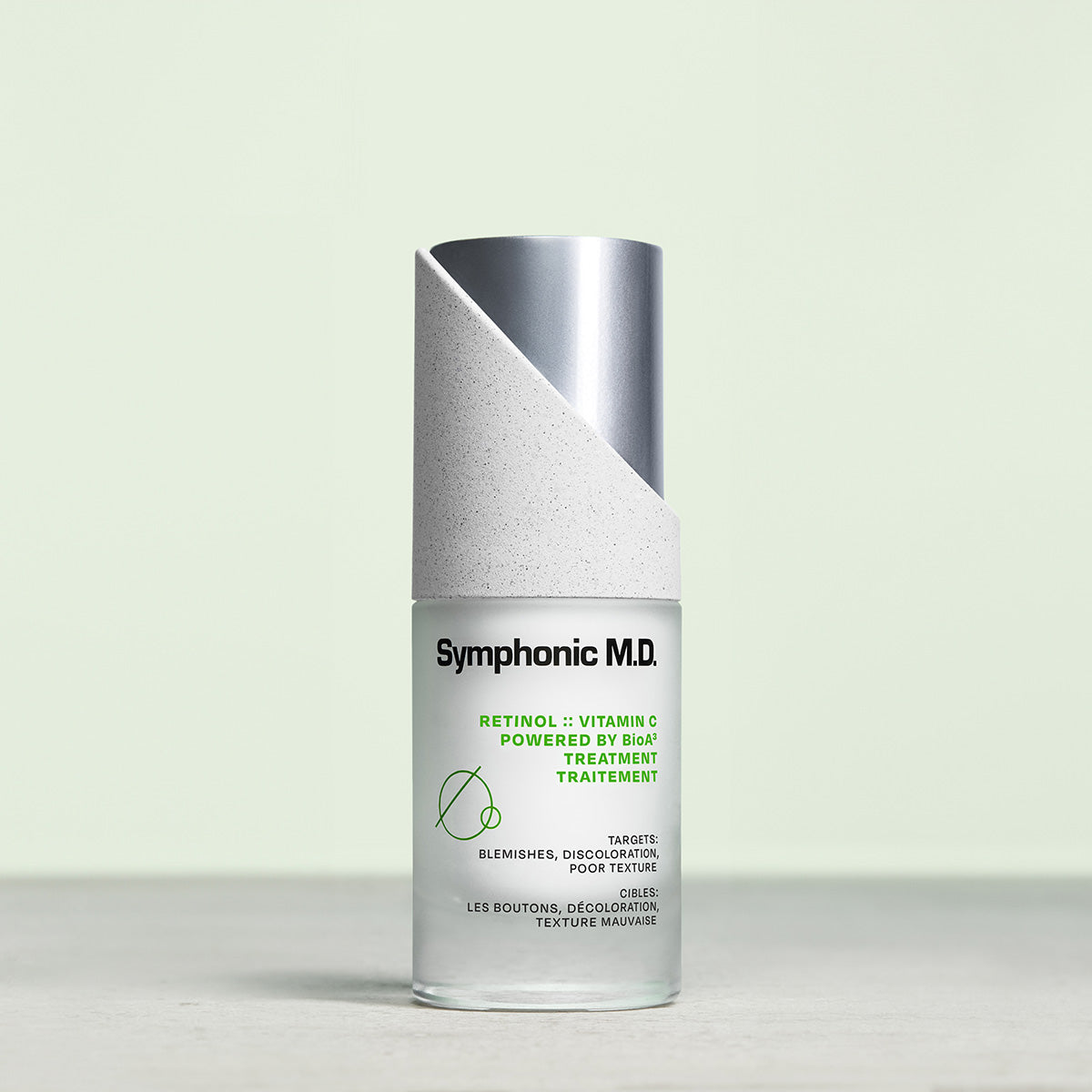
Retinol :: Vitamin C
This anti-inflammatory serum powered by BioA3 targets blemishes, tone, and texture — helping to clear bacteria and smooth skin without clogging pores.
Peptides
If you’re looking for something gentle on the skin that also delivers results, peptides are a great option. Peptides are short chains of amino acids that smooth the skin by increasing the production of collagen and improving elasticity.
Many different products contain peptides in support of wrinkle reduction which can make it hard to know which products to choose. As the clinical efficacy of peptides as an anti-wrinkle treatment has been confirmed in scientific research, many brands have been given the green light to include them in their products.
If you’re not sure where to start, look for serums and moisturizers that contain peptides like palmitoyl pentapeptide-4 or copper peptides, as these active ingredients best support wrinkle reduction.
Hyaluronic acid
The more plump your skin is, the more likely you are to reduce the appearance of fine lines and wrinkles. Hyaluronic acid is an essential ingredient for plumping the skin and achieving a well-hydrated, fresh look. Not only does it add moisture to the skin, but it also helps you retain that moisture and improve the skin’s elasticity.
It works to reduce wrinkles by hydrating the skin and delivering a more youthful appearance. Secondly, scientific research has shown that hyaluronic acid can stimulate collagen production, again plumping the skin and reducing the appearance of stress lines.
Antioxidants
While you have probably heard about the benefits of antioxidants in relation to diet and internal health, they are also highly credited in skincare and reducing wrinkles. Antioxidants are molecules that protect the body from free radicals and cell damage. When used in skincare, they can help to reduce DNA damage from UV light, increase collagen production, and improve the skin’s overall appearance.
When searching for products with antioxidants, you’ll have a lot of choices. To help reduce stress lines on the face with antioxidants, look for products containing vitamin C, vitamin E, and green tea extract.
Additionally, Symphonic M.D.’s Retinol :: Vitamin C Powered by BioA3 moisturizer is a good place to start. Combining the benefits of retinol and vitamin C, this moisturizer is a great all-rounder for targeting fine lines and wrinkles. The oil-soluble vitamin C included in the product is a powerful antioxidant and anti-inflammatory which helps to stimulate collagen production and reduce facial lines.
To help reduce stress lines on the face with antioxidants, look for products containing vitamin C, vitamin E, and green tea extract.
Niacinamide
Otherwise known as vitamin B3, niacinamide has several benefits for the skin. Research has revealed that topical application of niacinamide reduces fine lines and wrinkles, as well as hyperpigmentation, red blotches, and skin sallowness.
Niacinamide is an anti-aging hero product when it comes to smoothing wrinkles and boosting collagen production. It can also improve skin elasticity and even out skin tone. Niacinamide is also a gentle ingredient which means it’s an excellent choice for those with dry, sensitive, or acne-prone skin.
Other ways to prevent and treat stress lines
While skincare can have a significant impact when treating and preventing face stress lines, there are several other things you can do to help lessen their impact. Here, we’ll share a few tips that you can use alongside your tailored skincare regimen to help prevent and reduce stress lines and wrinkles.
Manage stress effectively
It might seem obvious, but managing your stress levels is key to avoiding stress lines. There are several mechanisms you can use to manage stress. To begin with, you need to establish what is causing your stress. Once you know, you can start to think about how to manage it.
Whether you’re stressed due to work, family, or a change in circumstances, you should try to manage your stress to reduce stress lines on the face. Some of the best ways to manage stress include relaxation techniques, exercise, yoga, meditation, and adopting healthy sleep habits.
Improve your lifestyle
Adopting a healthy lifestyle is vital for avoiding and treating stress lines on the face. If you already have unhealthy lifestyle habits, like smoking or a poor diet, you’ll want to cut these out. Smoking, in particular, can expedite the aging process, making your skin look dull and causing wrinkles to appear.
One of the easiest ways to improve your lifestyle is through nutrition, and this can have a big impact on the appearance of your skin. Be sure you’re drinking plenty of water to keep your skin hydrated and eat nutrient-rich foods that support skin health.
Moisturize regularly
We’ve mentioned how healthy and hydrated skin can help to treat and reduce the appearance of lines and wrinkles, but moisturization is also key to prevention. Opt for moisturizers with ingredients that plump and smooth the skin as this will help to keep wrinkles and stress lines at bay.
Ensuring you regularly moisturize as part of your daily skincare routine helps to nourish and hydrate the skin. This is vital as you age when your skin is more likely to feel dry and result in more stress lines.

Relax your face
Repeated facial expressions can result in stress lines, so it’s important to pay attention to what your face is doing. If you’re under a lot of stress, you might find you’re pulling expressions that place more tension in certain areas such as the forehead, eyes, and jawline. This can cause wrinkles and fine lines to appear sooner than they would have naturally.
Facial expressions you need to pay attention to include frowning, squinting, and pursing your lips. If you’re regularly doing these, make a conscious effort to relax the face when you notice you’re doing them.
Wear sunscreen
Protecting your skin from the sun’s harmful UV rays is essential for preventing fine lines and wrinkles. Even if it’s not a sunny day, you should apply sunscreen every day as UV rays can still penetrate through the clouds. The sun can really speed up the aging process so if you want to avoid wrinkles for as long as possible, this is one of the easiest ways to do it.
Be gentle with your skin
Looking after your skin from the outside can help to prevent stress lines on the face too. But it’s important to be gentle. Our face has some of the thinnest skin on our whole body, so you need to treat it with care. Opt for gentle cleansers with nourishing ingredients and avoid harsh soaps or cleansers that strip the skin of its natural oils.
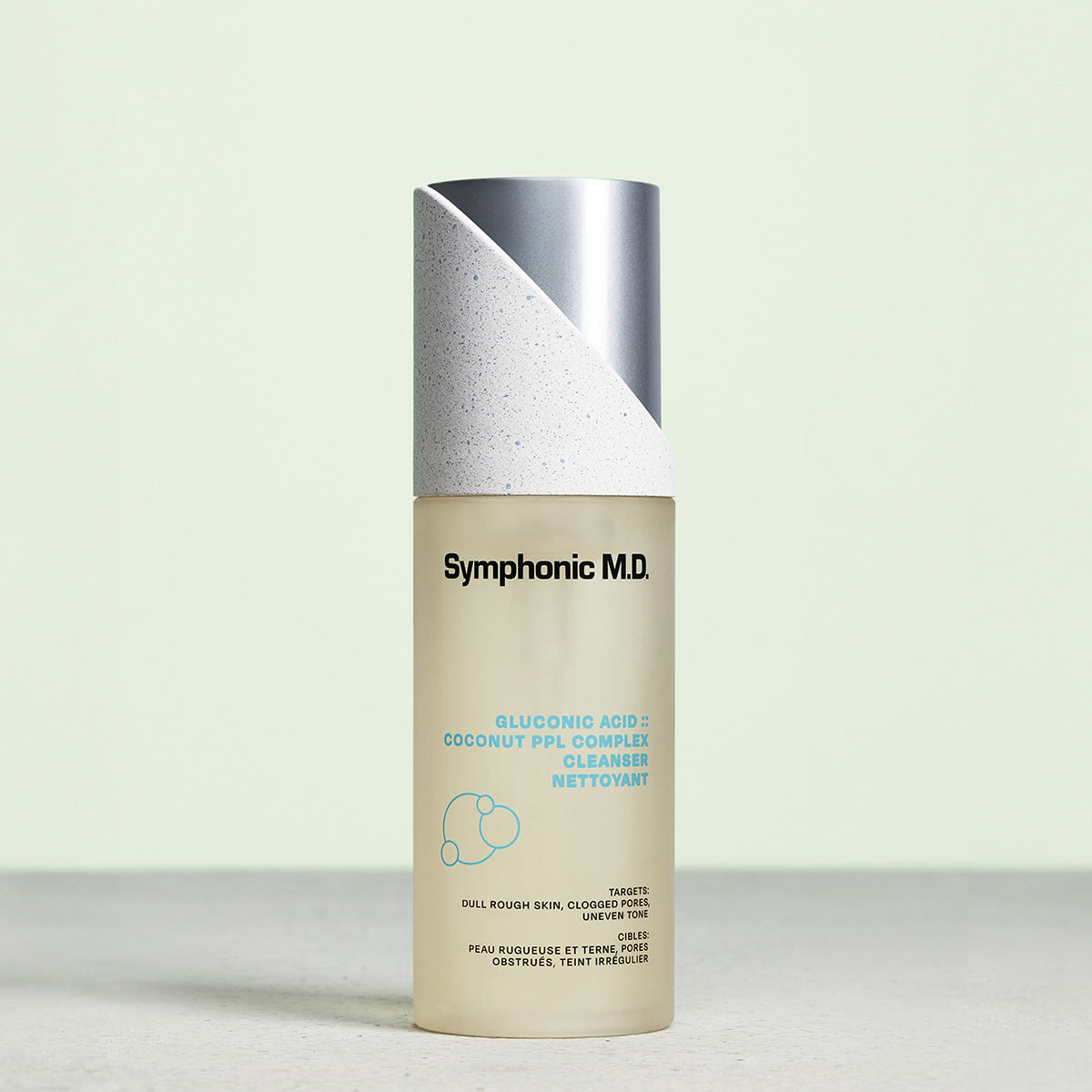
Gluconic Acid :: Coconut PPL Complex
This calming antimicrobial formula targets dull skin, clogged pores, and uneven tone — gently shedding cells while strongly stimulating barrier repair to leave skin soft and purified.
When establishing a consistent skincare routine, you should pay attention to both the products you’re using and how you’re putting them on your face. For instance, always use your fingertips to apply cleanser as they tend to use less pressure. You should also use lukewarm water when rinsing as water that is too hot can dry the skin out.
Try face yoga
If you’re open to something a bit different, face yoga can be beneficial for stress lines. By exercising and stretching the muscles in your face, you can grow your muscles and make the skin appear smoother. While most of the research on face yoga is inconclusive, some small studies and advocates of face yoga report that it can improve circulation, strengthen facial muscles, and reduce fine lines and wrinkles.
The bottom line
For most of us, stress is inevitable during many parts of our lives, which means fine lines and wrinkles will always be a possibility. Aging is a given too, so it’s just a matter of time before age-related wrinkles make an appearance.
While it’s not always possible to remove stress from your life, and it’s certainly not possible to avoid aging, our tips and techniques should go some way in helping you treat and prevent new stress lines from forming.
FAQs
Can stress lines go away?
Stress lines can go away when you put the effort into improving your lifestyle and maintaining an effective skincare routine. However, if your stress lines are particularly deep, it may not be possible to remove them completely and you might need to look at professional or invasive treatments.
Are stress lines normal?
Stress lines are completely normal and almost everyone has them in some shape or form. Most people will see stress lines on their forehead before anywhere else. If you have a lot of facial stress lines, or they are particularly deep and you’ve tried a few methods of treating them to no avail, it’s worth speaking to a dermatologist to see what other treatments are available.
Can your skin recover from stress?
Our skin is pretty resilient and it can recover from stress quite quickly with a little help. Adopting a healthy lifestyle and a good skin care regimen can help your skin recover from stress. When we’re stressed, our skin changes and could become drier or even more oily.
To help it bounce back, you should adapt your skincare products and routine to suit. For example, if your skin has become oilier, try adding a balancing toner to your routine. If it’s appearing more dry, switch to an emollient-heavy moisturizer.
